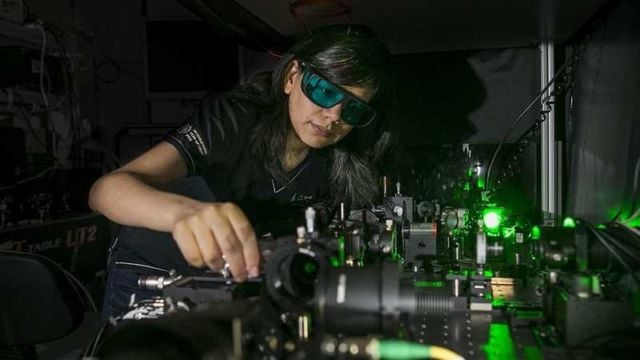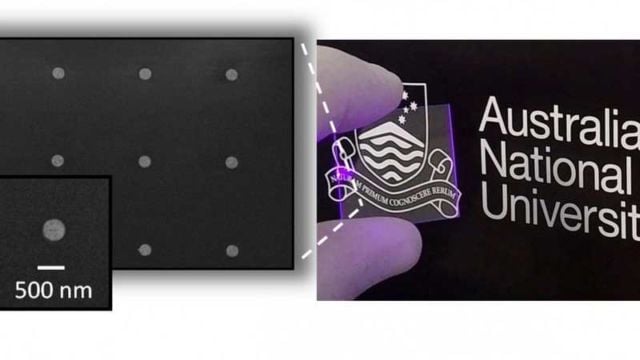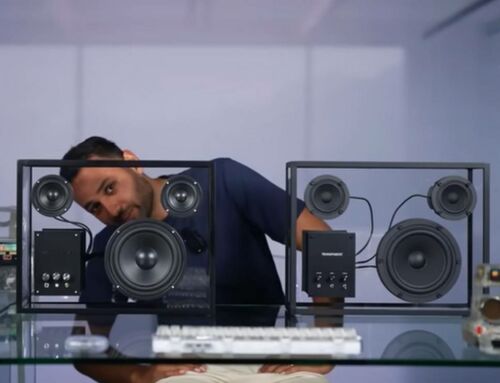New nanocrystals could allow for night vision technology to be applied to a conventional pair of glasses.
Researchers at ANU used an array of nanoparticles, just 500 times smaller than a human hair, to create what’s called a metamaterial with superior capabilities.
The nanocrystals when powered, can convert photons of infrared light into visible light.
Above, image credit Stuart Hay, ANU
The nano crystals are so small they could be fitted as an ultra-thin film to normal eye glasses to enable night vision.
Professor Dragomir Neshev from ANU said the new night-vision glasses could replace the cumbersome and bulky night-vision binoculars currently in use. He said:
“The nano crystals are so small they could be fitted as an ultra-thin film to normal eye glasses to enable night vision.
This tiny device could have other exciting uses including in anti-counterfeit devices in bank notes, imaging cells for medical applications and holograms.”
Ultra-thin nano crystal film developed at ANU. Credit Mohsen Rahmani, ANU
Co-researcher Dr Mohsen Rahmani said the ANU team’s achievement was a big milestone in the field of nanophotonics, which involves the study of behaviour of light and interaction of objects with light at the nano-scale. He said:
“These semi-conductor nano-crystals can transfer the highest intensity of light and engineer complex light beams that could be used with a laser to project a holographic image in modern displays.”
source ANU







Leave A Comment